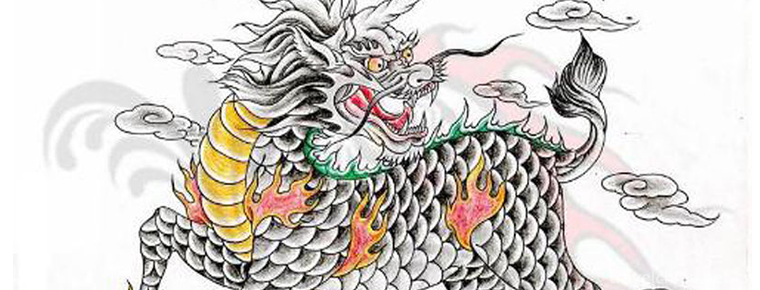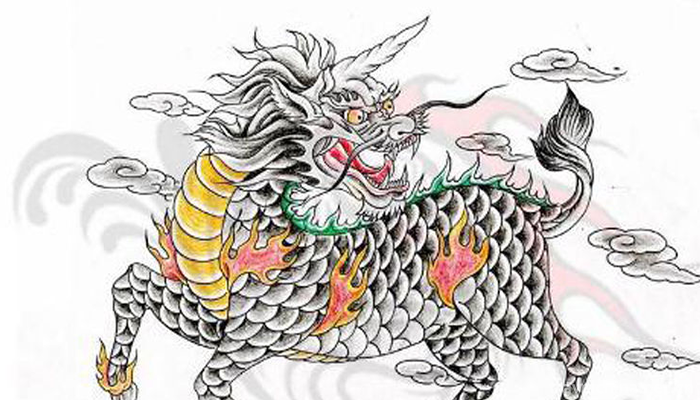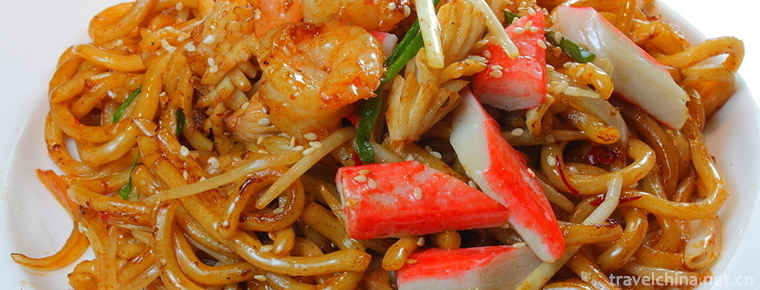2019-03-23

- By ChinaWiki.net
- Chinese Edition
- 2019-06-10
Legend of Kirin
The legend of Kirin is mainly spread in Jiaxiang County of Shandong Province and its surrounding areas. Kirin is an auspicious God and animal in ancient legends. Ancient books say that it "sounds Zhonglu, acts according to the rules, travels where you must choose, and then comes auspicious." No paramecium, no grass, no community, no couple, no net." The legend of Qilin has been circulating in Jiaxiang for thousands of years. It can be said that women and children are well known. Now it has evolved from legend to a kind of auspicious culture. Qilin Legend is a literary work deeply rooted in Shandong local folklore, rich in local and national characteristics, full of the simple feelings and rich imagination of the working people, and has precious value of folk literature and the special value of anthropology, ethnology and folklore research materials.
On June 7, 2008, Qilin Legend was approved by the State Council to be included in the second batch of national intangible cultural heritage list.
Historical Origin
In June 2008, in the second batch of national intangible cultural heritage list published by the State Council, "Kirin Legend" was prominently listed. Jiaxiang County, named after Qilin Legend, has written a new chapter in cultural development.
"Enter Jiaxiang, happiness and auspiciousness". On the stone carving avenue of Jiaxiang County Town, the stone carvings of Kirin stand or stand, or lie on their back or lie on their backs, each unique shape fully demonstrates the wisdom and rich imagination of the working people of China. Kirin, an ancient legendary animal, is shaped like a deer, a single horn, scales on its body, and cattle on its tail. With phoenix, turtle and dragon, they are called "Four Spirits" and rank first among them. Ancient books said that he: "Zhonglu in the sound, in line with the rules, travel must choose the place, do not practice grass, do not live in groups, do not couples, do not get caught." It's an auspicious animal. In China, people think that the appearance of Kirin is a great auspicious event. Many auspicious things are associated with Kirin. For example, descendants of Changsheng are called "Lintoe", rare and valuable talents or things are called "Linjiao", noble people are called "Linfeng", "Linge" means outstanding merit and highest honor... Liu Hengjin, 67, is one of the representative inheritors of Qilin legend. In recent years, he has collected a lot of information about Qilin and made textual research. He has written the book Jiaxiang Historical Tales, which introduces the origin of Qilin legend and Jiaxiang in detail, and has made great contributions to the widespread spread spread spread spread of Qilin legend. Liu Hengjin said that Jiaxiang County has been known as the birthplace of Kirin since ancient times. There are abundant Kirin legends in Jiaxiang. Kirin legends are more closely related to Confucius. Legend has it that Confucius's mother, Yan Shi, was pregnant in October and was passing Nishan when she suddenly had a stomachache and was about to give birth. At this time, the sky roared, a unicorn carrying a white fat child, driving colorful auspicious clouds from the sky. At this time, the Rui Qi was in full swing and the sky was red. Unicorn crashed into Yan's arms, and Confucius was born. In the fourteen year of Lu Gong, an old farmer in Wucheng drove a cow to plough the field. The ox gave birth to a calf, unlike a pig, unlike a cow. The first born was not a deer, but its body was not like a dragon. It was a four inch elephant. When it was not born, it stood up to eat the ploughshares and ploughshares. Wag your tail and go.
Fourth, unlike Kirin. In that year, Duke Aigong of Lu went hunting in the wilderness more than twenty miles west of Wucheng and shot the Kirin to death. But he did not know what animal it was, so he asked Confucius to come and identify it. Confucius saw a unicorn and said with great distress, "This is a unicorn. It's a kind animal. Now it's so confused. Why did you appear at this time?" After that, he broke down and cried bitterly. Henceforth, he stopped compiling Spring and Autumn Annals. Soon Confucius died. Nevertheless, Kirin, known as one of the four spirits of "Linfeng tortoise dragon", can appear on the ground of Wucheng. People believe that it is still an excellent omen, so they take its meaning of Jiamei and auspicious auspiciousness and rename Wucheng Jiaxiang. As early as Zuo Zhuan, it was recorded: "In the spring of 14 years of Aigong's reign, he hunted in Daye in the west, and his uncle Sun Huolin thought it was ominous to bestow Yu people. Zhong Niguan said,'Lin Ye!' Then take it." In addition, Qilin was inscribed on the first stone carved on the first stone of Xiangruitou, the first batch of national key cultural relics protection units in Jiaxiang County, more than 1800 years ago. Its title indicates that Qilin is a benevolent animal and a benevolent animal, and exhorts people to abide by benevolence. The emergence of Kirin is often regarded as a symbol of the birth of sages. There are many stories and legends about Kirin in ancient Chinese classics. Such as the story of "Confucius weeping Lin" and "Qilin Tuyushu". "Collection of Remains" said: "When Confucius was not born, there were Lin Tuyu's books in the family of Queli. That is to say, when Confucius was about to be born, Kirin appeared and spit out a piece of square silk in his mouth, which said, "The descendants of Shuijing, who mourn the Zhou Dynasty but are the king, are rewarded with wisdom". The next day Confucius, the sage, was born. According to the ancient thought, Qilin can appear in Jiaxiang, indicating that Jiaxiang is a lucky treasure land. Kirin legend is rich in Chinese people's spiritual ideal of pursuing auspicious happiness, so it will go through more than two thousand years without fading. His influence has penetrated into all aspects of Jiaxiang people's lives and evolved into a kind of folk characteristics and cultural imagination, which is called auspicious culture by experts and scholars. Auspicious culture is based on the legend of Kirin and takes auspiciousness as its core. It is closely combined with folk customs and folk arts, and expresses people's beliefs and aspirations to realize their ideals and goals. Jiaxiang County is known as the land of Kirin, and its origin with Kirin can be said to be very deep. The County sign of Jiaxiang County is Kirin. Kirin stone carvings are placed in important locations in the city. Many of the main streets are named after Kirin, such as Huolin Street, Chengxiang Street Square, residential areas, hotels, newspapers, books and periodicals. Kirin is also the theme of the famous stone carvings and Lu Jin in Jiaxiang County. The famous red garlic in Jiaxiang County is said to have become red skin because of the blood of Kirin on the local land. All of these fully demonstrate people's desire to cherish Kirin and pursue auspiciousness. However, the legend of Kirin still faces the problem of inheritance. According to the reporter's understanding, the content of Qilin legend is mostly created orally by the working people. Because of the low educational level of the creative and disseminated groups, for thousands of years, Qilin legend has been circulated by oral biography, different disseminators re-create it with different life experiences and aesthetic concepts, and different times also make disseminators advance it with different thoughts and feelings. Works often change when they are processed. In order to continue the inheritance of Qilin legend, cultural workers in Jiaxiang County have done a lot of work in recent years. They specially studied the historical origin and cultural connotation of Qilin legend and integrated different versions. In the future, they will take various measures to protect the inheritance of Kirin legends. We will further collect and collate data, establish complete archives, train new generations of inheritors, organize theoretical research to find out the origin and connotation of Qilin legends and other issues, and establish Qilin Park to focus on the display of auspicious culture. In addition, Jiaxiang County will also establish and further develop various Kirin cultural works of art to ensure that the spirit and connotation of Kirin culture can be widely disseminated.
The second batch of national intangible cultural heritage list of "Qilin Legend" is an opportunity for its development. In the new era, this cultural legend, which embodies the Chinese people's yearning for auspiciousness for more than two thousand years, will usher in a new opportunity.
primary coverage
According to the records of Spring and Autumn Period and its three biographies, in the spring of 14 years, Duke Aigong of Lu hunted Daye to get Lin. The place where he got Lin was in Jiaxiang. Jiaxiang was located in the county during the reign of Jinhuangtong, and was named after his idea of Jiameixiangrui. In the west of Jiaxiang County, there are Linzhong and Huolintai Sites. Jiaxiang's "Qilin Legend" has a long history. It is mainly derived from historical records. It reflects people's psychology of loving auspicious life and pursuing happy life.

Ask a Question
Your email address will not be published.



0 Questions